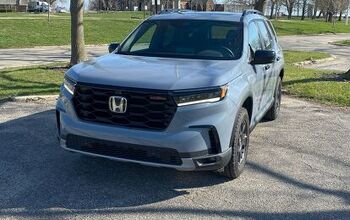FCA Planning Industry-First PHEV Minivan
FCA CEO Sergio Marchionne hasn’t been too enamored with electrification, especially with the Fiat 500e, but he now has his sights set on a PHEV minivan.
Detroit Free Press reports the PHEV would be the company’s third overall attempt to market such a vehicle, following the 1993-1995 $120,000 TEVan — built on the same line in Windsor as the standard minivans — and the 1997 EPIC electric minivan with a range of 120 miles delivered by its advanced lead acid batteries. The new PHEV minivan would also be the first hybrid minivan of any sort to come to market since the hybrid category’s U.S. debut in MY 2000, and would spawn a PHEV crossover to debut in 2017.
While the PHEV would provide improved city fuel economy in its role as a family shuttle, placement of the battery pack would have to be sorted due to the automaker’s signature Stow ‘n Go seating and storage system. Pricing is another concern, especially as the next generation of FCA minivans will be a Chrysler product; Chrysler’s Town & Country has commanded higher transaction prices over the Dodge Grand Caravan.
FCA also has to present a case to hybrid consumers who wouldn’t normally consider its brands, the result of not having hybrids throughout the range, with the PHEV minivan likely cannibalizing sales from the automaker’s traditional minivan consumers.
Seattle-based writer, blogger, and photographer for many a publication. Born in Louisville. Raised in Kansas. Where I lay my head is home.
More by Cameron Aubernon


































Comments
Join the conversation
I'm really surprised Toyota didn't have a hybrid Sienna years ago. If Chrysler can pull it off and keep sales momentum up it'll be a good thing. For me, it's hard to comprehend how thirsty minivans can be and it's surprising that there still isn't a hybrid van yet. And yes, this would be an excellent replacement for the worn out, smokey LLVs I see on a daily basis.
About as likely to happen as Alfa Romeo coming to North America with a plethora of new models based on the compact-wide extra-heavy platform. All powered by the MultiAir TigerWimp 2.4, an engine possessing a dashing portfolio of dull responses.
This makes a great deal of sense, if they don't want to lose the advantage to someone else doing it first. 1. BYD is bringing its electric minivans to the US. If FCA could get theirs into consumer (not fleet) hands first, it would steal the Chinese thunder. 2. When I'm parking my C-Max, parents walk up and say "a hybrid minivan? great idea...if it had three rows I'd buy one." Ford could hybridize and federalize the Grand C-Max, but that would take time; FCA could have their entry ready sooner. 3. Toyota could drop their hybrid powertrain into the Sienna, and with their reputation as the Prius people, dominate the niche. Better for FCA to get it done first. 4. Kia could drop the Optima hybrid powertrain into the new Sedona, providing a new selling point for what's already the freshest minivan. (Granted, the Optima hybrid powertrain underwhelms the critics.) 5. Look how many FCA cargo minivans are used by USPS and UPS. Look how many Prius/Camry/Escape/C-Max hybrid taxis are in use. Consider that a FCA hybrid minivan would be clearly superior for all those jobs, and that those fleets turn over pretty quickly with all the miles they log. Good opportunity!! 6. A battery compartment is already present: delete the Stow & Go seating option and put the battery in its well. Engineer in a better spot when designing the next generation van, sure, but don't waste time with that issue now.
They would likely ditch "Stow-and-Go" on an electric minivan in the name of range. One nice advantage would be the nice heavy batteries where the "basement" used to be, the center of gravity should be really low.